When Samsung introduced its Onyx LED Cinema Display, it was the first serious challenge to the projector-based setup that’s defined movie theaters for over a century. Instead of beaming light across a room onto a screen, Onyx brought self-emissive LED panels directly into the theater, offering deeper blacks, higher brightness, and no need for a projection booth. Initially rolled out in just a handful of locations, the technology expanded in 2019 to include a few more sites and has since been installed in theaters across China, India, and Europe—including the historic Pathé Palace in Paris.
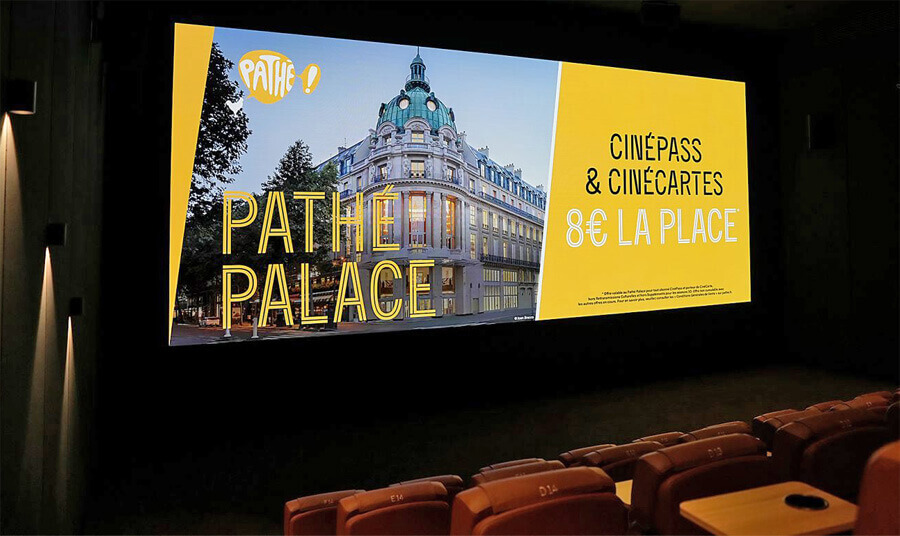
Now, in 2025, Samsung has unveiled an upgraded version of its Onyx Cinema LED screen at CineEurope 2025. The next-gen display is set to roll out across more European theaters, as the company ramps up its push to replace traditional projection once and for all. As part of the announcement, Samsung revealed a promotional partnership with Pixar Animation Studios. Pixar is reportedly planning to install Onyx screens at its California campus, where they’ll be used for pre-production evaluations and private demo screenings for filmmakers—a sign that even animation powerhouses are taking the leap into next-gen theatrical tech.
From Jessie Schroeder, VP Post Production, Pixar Animation Studios: “Samsung’s Onyx screens allow our Pixar artists to present their stories exactly as they envisioned them — vivid, dynamic and true to life,…By mastering our films in HDR with Onyx, we continue to unlock a new level of visual storytelling for filmmakers and deliver the next generation of cinematic experiences for our audiences.”
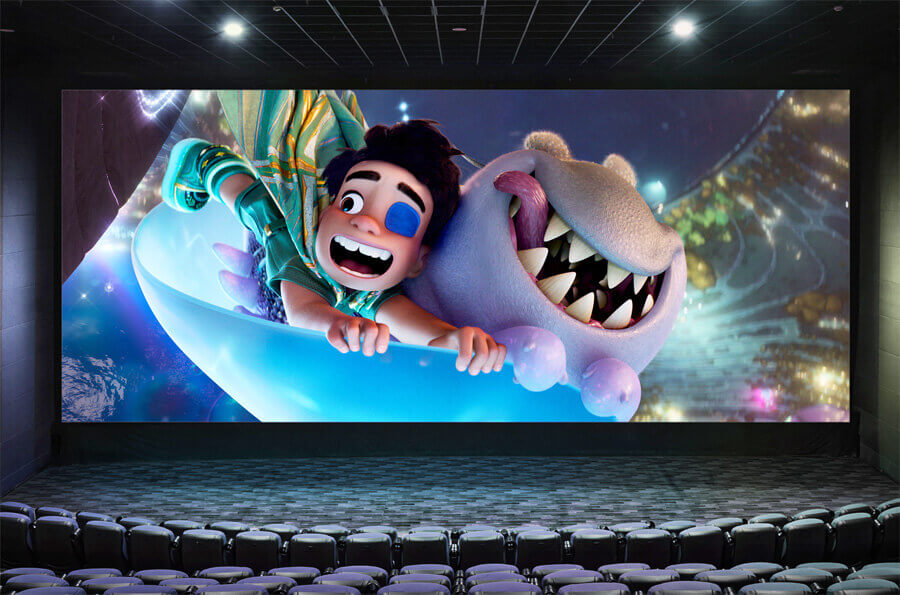
What Is the Samsung Onyx Cinema LED Screen?
The Samsung Onyx Cinema LED Display is a self-emissive flat panel screen built using technology similar to Micro-LED—also known in the industry as DV-LED (Direct View LED), a term popularized by LG. Unlike traditional projection systems, every pixel in the Onyx display emits its own light, allowing for true blacks, high contrast, and vibrant color accuracy—just like OLED and Micro-LED, but scaled up for a full-size movie theater.
Instead of one giant display panel, the screen is built from smaller modular components, often referred to as cabinets or modules, which are pieced together to form a seamless cinema-sized display. This allows for flexibility in screen size, easy maintenance, and consistent image quality across the entire surface.
Time for an Upgrade
Since the first Onyx Cinema Screens debuted back in 2018, the technology has held up well—but by 2025 standards, it’s due for a refresh.
Samsung’s next-generation Onyx displays address that head-on with a set of much-needed upgrades. The new models now support full 4K HDR, smoother playback with frame rates up to 120Hz, and meet DCI Certification standards—making them officially ready for Hollywood-level digital cinema. These improvements bring the Onyx platform more in line with today’s high-performance content and give theater owners a reason to consider upgrading from first-gen models.
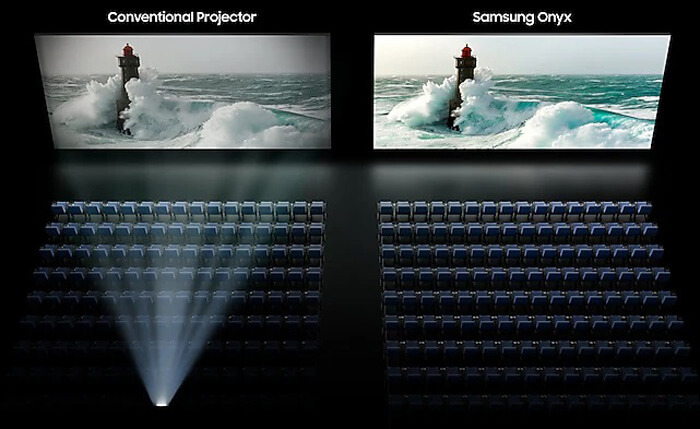
Brighter, Bolder, and Built for 3D
Samsung’s upgraded Onyx screens now boast peak brightness levels of up to 300 nits—more than six times brighter than a typical commercial cinema projector (48 nits), and four times brighter than an IMAX system (75 nits). That’s not just a spec sheet flex—it has real-world impact.
One major benefit of this kind of brightness is its potential for vastly improved 3D playback. Most current cinema projectors struggle with 3D because they simply don’t pump out enough light, and once you slap on a pair of 3D glasses, things get even dimmer. With 300 nits on tap, the new Onyx is far better equipped to deliver 3D content that doesn’t look like it’s being filtered through a pair of muddy sunglasses.
The upgraded Onyx also comes in four standard sizes—5, 10, 14, and 20 meters—but thanks to its modular design, it can be scaled even larger for custom exhibition needs without sacrificing image quality.
Core Feature Summary
- True Black: With the ability to display pure black, details in dark scenes are not muddy looking, and details are more present. Also, deep blacks also enhance color shading and display.
- Vivid Color: Onyx supports precise color accuracy across a range of hues, delivering 100% color volume even at peak brightness
- HDR support: Samsung Onyx’s HDR technology enhances brightness by approximately 6 times compared to conventional cinema standards, resulting in a more real-world viewing experience.
- Scalable Size: With flexible scaling options, theaters can make the most of their space and present films in the largest, most immersive format possible.
Flexible Media Server Options: Onyx provides full compatibility with both Dolby and GDC media servers, enabling streamlined content management.

From Hoon Chung, Executive Vice President of the Visual Display (VD) Business at Samsung Electronics: “Europe is a vital market for cinema innovation, and the launch of Onyx marks a new chapter in our commitment to premium movie experiences,…By partnering with leading cinema chains like Pathé Cinémas and creative pioneers like Pixar, we are empowering the industry to deliver a truly immersive and visually stunning cinematic journey for audiences everywhere.”
Samsung Onyx Cinema LED Screen Specifications
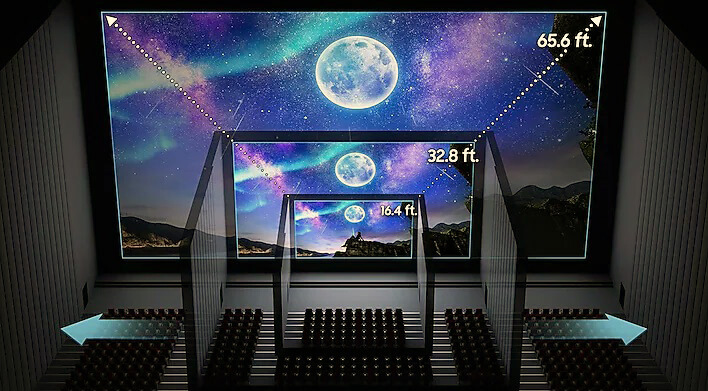
| Samsung Onyx | Configuration 1 | Configuration 2 | Configuration 3 |
| Product Type | Cinema LED Screen | Cinema LED Screen | Cinema LED Screen |
| Screen Specs | Screen Specs | Screen Specs | Screen Specs |
| Pixel pitch | 1.25 mm | 2.5 mm | 5.0 mm |
| Resolution (Cinema 4K) | 4,096 x 2,160 | 4,096 x 2,160 | 4,096 x 2,160 |
| Screen Size (m / ft.) | 5 m / 16.4 ft | 10 m / 32.8 ft. | 20 m / 65.6 ft |
| Scaling Support | Yes | Yes | Yes |
| Size (W x H mm / in.) | 5,120 x 2,700 mm 201.5 x 106.3 in. | 10,240 x 5,400 mm 403.1 x 212.6 in. | 20,480 x 10,800 mm 806.3 x 425.2 in. |
| Size (Inches) | 227″ | 455″ | 911″ |
| Number of cabinets | 24 | 96 | 384 |
| Price per Cabinet | $3,330 | $3,330 | $3,330 |
| Screen Weight (kg/lbs.) | TBD | 1,363 kg / 3,005 lbs. | TBD |
| Aspect ratio | Flat (1.85:1) Scope (2.39:1) | Flat (1.85:1) Scope (2.39:1) | Flat (1.85:1) Scope (2.39:1) |
| Module Specs | Module Specs | Module Specs | Module Specs |
| Size (W x H mm) | 160 x 120 | 160 x 150 | 160 x 150 |
| Resolution | 128 x 60 | 64 x 60 | 32 x 30 |
| Cabinet Specs | Cabinet Specs | Cabinet Specs | Cabinet Specs |
| Number of modules (EA) | 24 | 24 | 24 |
| Resolution | 512 x 720 | 256 x 360 | 128 x 180 |
| Size (W x H x D mm) | 640 x 900 x 125 | 640 x 900 x 125 | 640 x 900 x 125 |
| Physical security | Key locking (DCI compliant) | Key locking (DCI compliant) | Key locking (DCI compliant) |
| General Specs | General Specs | General Specs | General Specs |
| Brightness | 14fL (48nits) 87.6 fL (300nit) Adjustable for alternative content | 14fL (48nits) 87.6 fL (300nit) Adjustable for alternative content | 14fL (48nits) 87.6 fL (300nit) Adjustable for alternative content |
| Contrast ratio | Infinity in a Dark Room | Infinity in a Dark Room | Infinity in a Dark Room |
| Color gamut | DCI-P3 | DCI-P3 | DCI-P3 |
| Screen Uniformity | Over 90% | Over 90% | Over 90% |
| Refresh rate | 3,840 Hz | 3,840 Hz | 3,840 Hz |
| Power Consumption (Typical, Screen) | TBD | (300nit) 6,380W, (48nit) 4,076W | TBD |
| Viewing Angle | 160 / 160 | 160 / 160 | 160 / 160 |
| Frame Rate | Screen, Max 4K 120 Hz (IMB Frame Rate Dependent) | Screen, Max 4K 120 Hz (IMB Frame Rate Dependent) | Screen, Max 4K 120 Hz (IMB Frame Rate Dependent) |
| Maintenance | Rear | Rear | Rear |
| Warranty | Basic 3 years, extendable up to 10 years | Basic 3 years, extendable up to 10 years | Basic 3 years, extendable up to 10 years |
The Bottom Line
Cinemas have delivered big-screen entertainment for over a century, and throughout that time, the projector-and-screen combo has ruled the booth. Sure, there have been plenty of advancements—projectors got sharper, brighter, and more efficient, while other innovations like sound (from silence to stereo to Dolby Atmos), Technicolor, Cinemascope, and IMAX helped keep the movie theater experience ahead of the living room. The jump from film to digital projection was another major turning point.
But since 2018, Samsung has quietly been pushing a different vision with its Onyx Cinema LED display—a self-emissive screen that ditches the projector entirely. Adoption has been slow, but steady. And now, with a new generation of Onyx displays offering increased brightness, 4K resolution, HDR, and support for 120Hz frame rates, we might finally be on the verge of a broader shift away from traditional projection.
Interestingly, this trend isn’t limited to theaters. At home, projectors (including Laser TVs) are also facing heat from extra-large LED and Micro-LED TVs that offer better image quality and convenience.
Movie theater purists might scoff at the idea of replacing projectors with massive LED walls—but they probably scoffed when we replaced film reels with hard drives, too.
For additional info, refer to the Samsung Onyx Ciema LED Display Product Page.
Related Reading

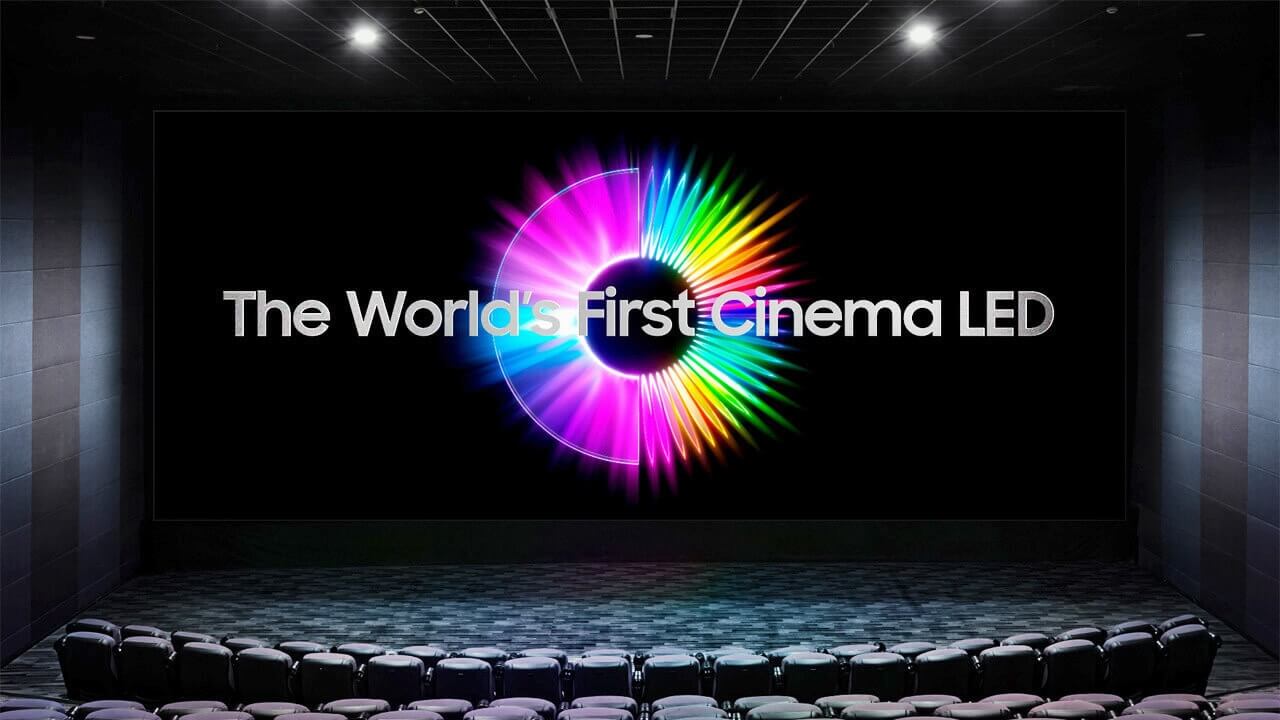
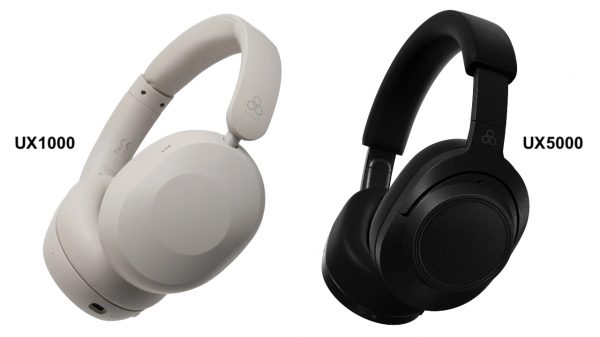
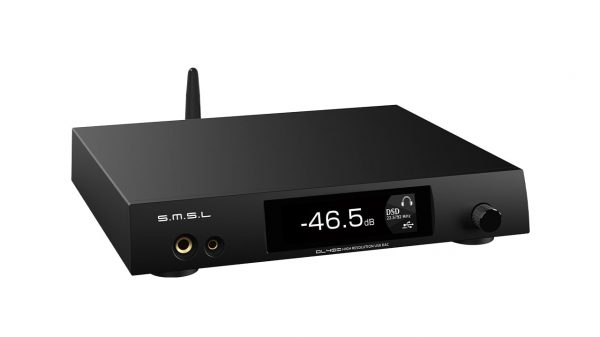
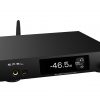






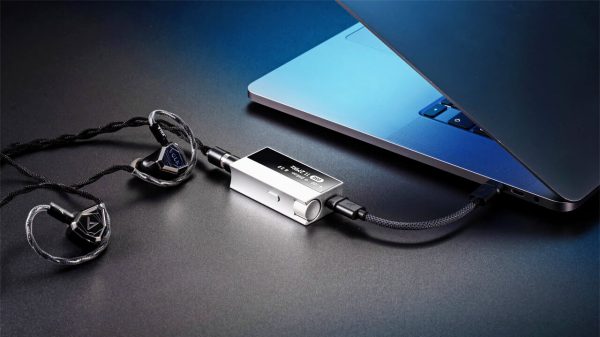

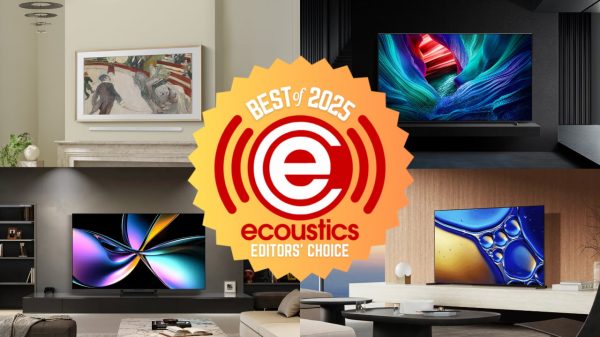



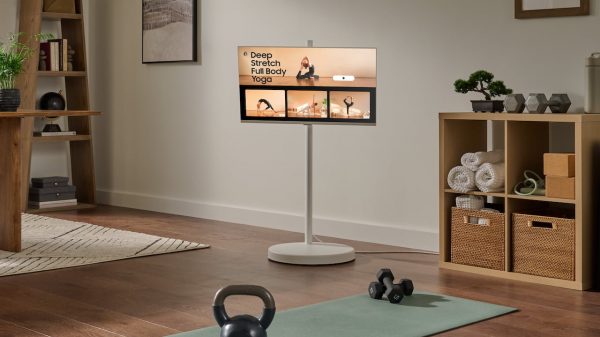
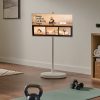

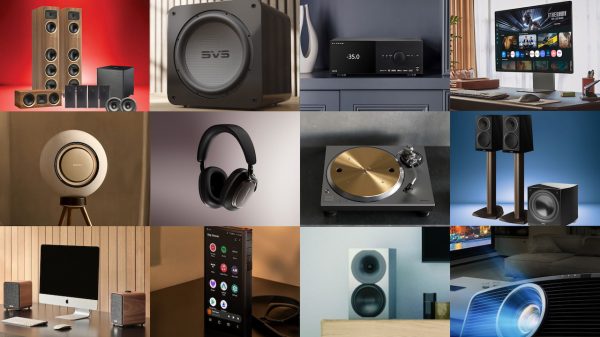

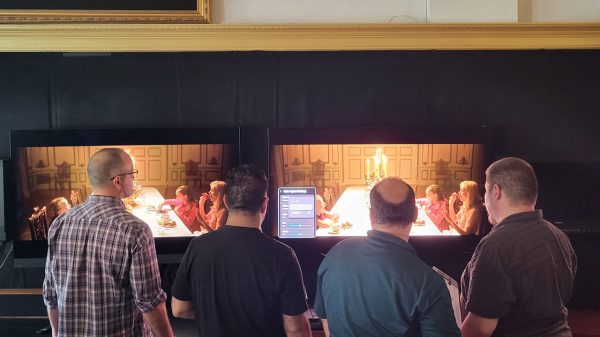

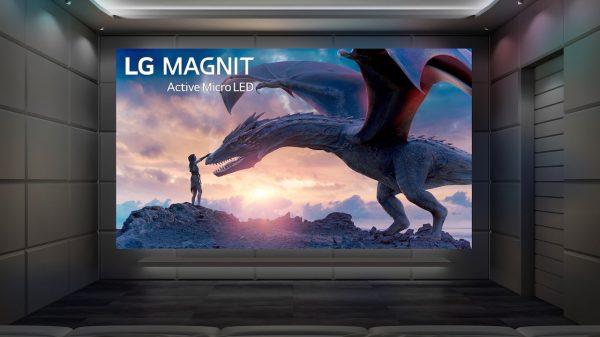












Anton
June 23, 2025 at 6:38 am
Fascinating. How many theaters in the United States currently use these screens?
Projectors clearly have a murky future ahead.
Michael
June 23, 2025 at 12:52 pm
Where do the front stage speakers go?
Fred
June 30, 2025 at 1:20 am
The front speakers?
Atmos will have to be rebuilt with ”phantom” speakers(?)
Best question!